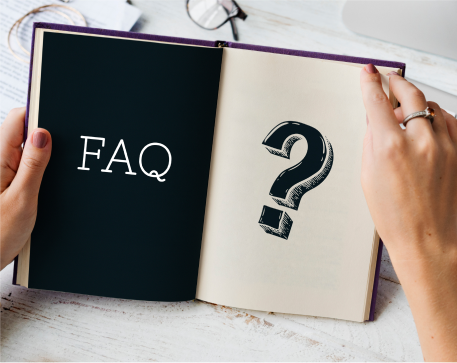Ready to learn?
Take the first step toward achieving your educational goals. Whether you’re preparing for exams or expanding your knowledge, getting started is just a click away. Join us today and unlock your full potential
832, utkarsh bhawan, near mandap restaurant, 9th chopasani road, jodhpur rajasthan - 342003
support@utkarsh.com
+91-9116691119, +91-9829213213
Support
Learning Resources
Rajasthan Govt Exams
Central Govt Exams
Civil Services Exams
Nursing Exams
School Tuitions
Other State Govt Exams
Agriculture Exams
College Entrance Exams
Miscellaneous Exams

© 2025 Utkarsh Classes & Edutech Pvt. Ltd. All Rights Reserved
Home
National Current Affairs
Science
India to use Atomic clock to ensure uniform time across the country

Utkarsh Classes
Updated: 28 Mar 2024
4 Min Read

The government of India is deploying several atomic clocks across the country to ensure that all devices, such as smartphones, digital watches, laptops, etc., are truly based on the Indian standard time. At present, most software operating modules, such as Windows and Android, rely on US-based Network Time Protocol servers.
The government wants all the software operating modules used in India to be synchronised with the Indian atomic clocks. Only four countries—the United States of America, The United Kingdom, Japan and South Korea—have developed their atomic clocks.
The atomic clock was invented in 1955 by Louise Essen, a physicist at the United Kingdom Physical National Laboratory.
Most modern clocks use quartz crystal oscillators to keep time. The quartz crystals vibrate at a precise frequency when voltage is applied to them, helping measure time. However, after every hour, the quartz oscillators become slow by a nanosecond (one billionth of a second). Thus, they must be adjusted every hour to reflect the correct time accurately.
Atomic clocks are considered more stable than quartz crystal clocks. The most advanced atomic clock loses one second every 300 billion years.
Atomic clocks combine the quartz crystal clock with an atom. The atomic clock normally uses a caesium atom which has a very specific frequency that is consistent across the universe. Every atom consists of electrons that occupy a specific energy level or orbit. Applying a specific amount of energy or frequency in the form of microwaves changes the electron's orbit.
In an atomic clock, the quartz oscillator's frequency is converted into the desired frequency and applied to the atoms. The electrons in the atom will change their orbit due to the application of the microwave frequency. A detector will detect the change in frequency of the atoms. If the derived frequency is correct, many electrons in the atoms will change their energy levels. If the frequency is incorrect, a few electrons will change their energy level. This will help the scientist determine if the quartz oscillator is off-frequency and by how much. The atoms can then apply a “correction” to steer it back to the correct frequency.
There are two types of atomic clocks: caesium and hydrogen maser atomic clocks. The hydrogen maser atomic clock is more accurate than the caesium atomic clock. It is mainly used in scientific research.
The caesium atomic clock is used to define the International Standard Time or Coordinated Universal Time (UTC), which is used by a number of electronic devices.
The Council of Industrial and Scientific Research(CSIR)-National Physical Laboratories (NPL) New Delhi is the country's official timekeeper and maintains the Indian Standard Time. It maintains five caesium atomic clocks and two Hydrogen maser clocks.
The Union Ministry of Consumer Affairs Legal Metrology Department and the National Physical Laboratory are establishing new atomic clocks at Bhubaneswar, Jaipur and Hyderabad, in addition to the existing ones at Faridabad and Ahmedabad.
The government plans to install the new atomic clock by June this year. Once the clocks are installed, the government will make it mandatory for all manufacturers of computers, smartphones, digital watches, etc., to synchronise with the NPL Indian Standard Time.
Currently, accurate time-keeping is done through satellite. The government is working to connect all atomic clocks through optical cable as it will be more secure,"
During the Kargil war with Pakistan in 1999, the United States government switched off the Global Positioning System(GPS) for the Indian Army. Due to this, the Indian Army could not accurately locate the Pakistani Army's position. This led to India realising that it had to build its own accurate clock. The project to have India’s own atomic clock system was launched after the Kargil war where the Indian Standard Time would be synchronised with the atomic clock.
Also, Atomic clocks are more accurate than conventional quartz clocks. A delay of a few seconds can be a serious disadvantage in dealing with cases regarding cyber crimes, online transactions, frauds or defence.
India has only one time zone, Indian Standard Time. It was adopted on 1 September 1947.
The Indian Standard Time is calculated from 82.5 degrees East longitude, which falls on a clock tower in Mirzapur, near Allahabad, Uttar Pradesh. It is 5.30 hours ahead of the Greenwich Mean Time (GMT)
Top Posts
Frequently asked questions

Still have questions?
Can't find the answer you're looking for? Please contact our friendly team.
Visit an Offline Centre Near to You.

1-Liner PDFs FREE !
Kumar Gaurav Sir ki Class PDF aur Daily One-Liner CA – Bilkul Free! Rozana preparation ko banaye aur bhi Damdaar!